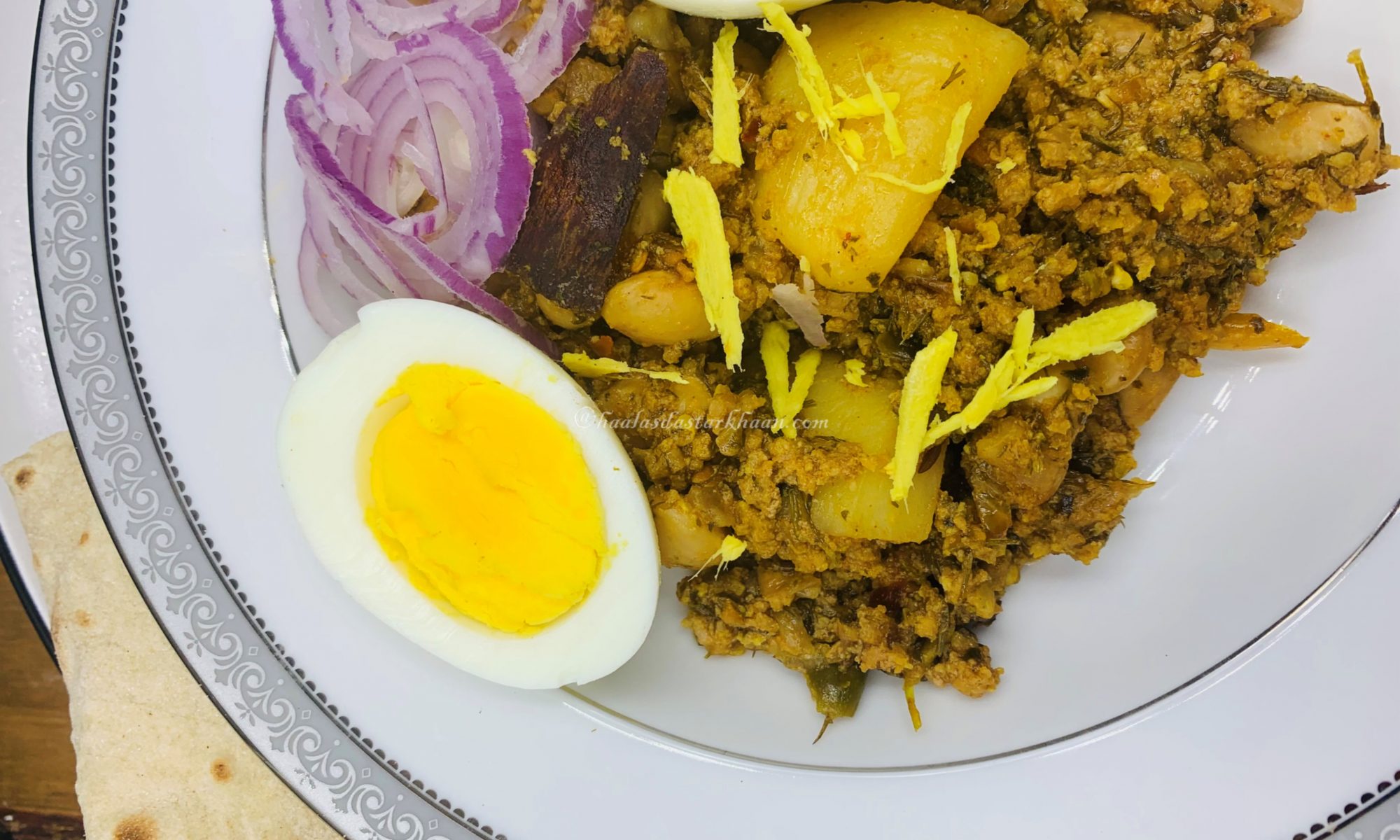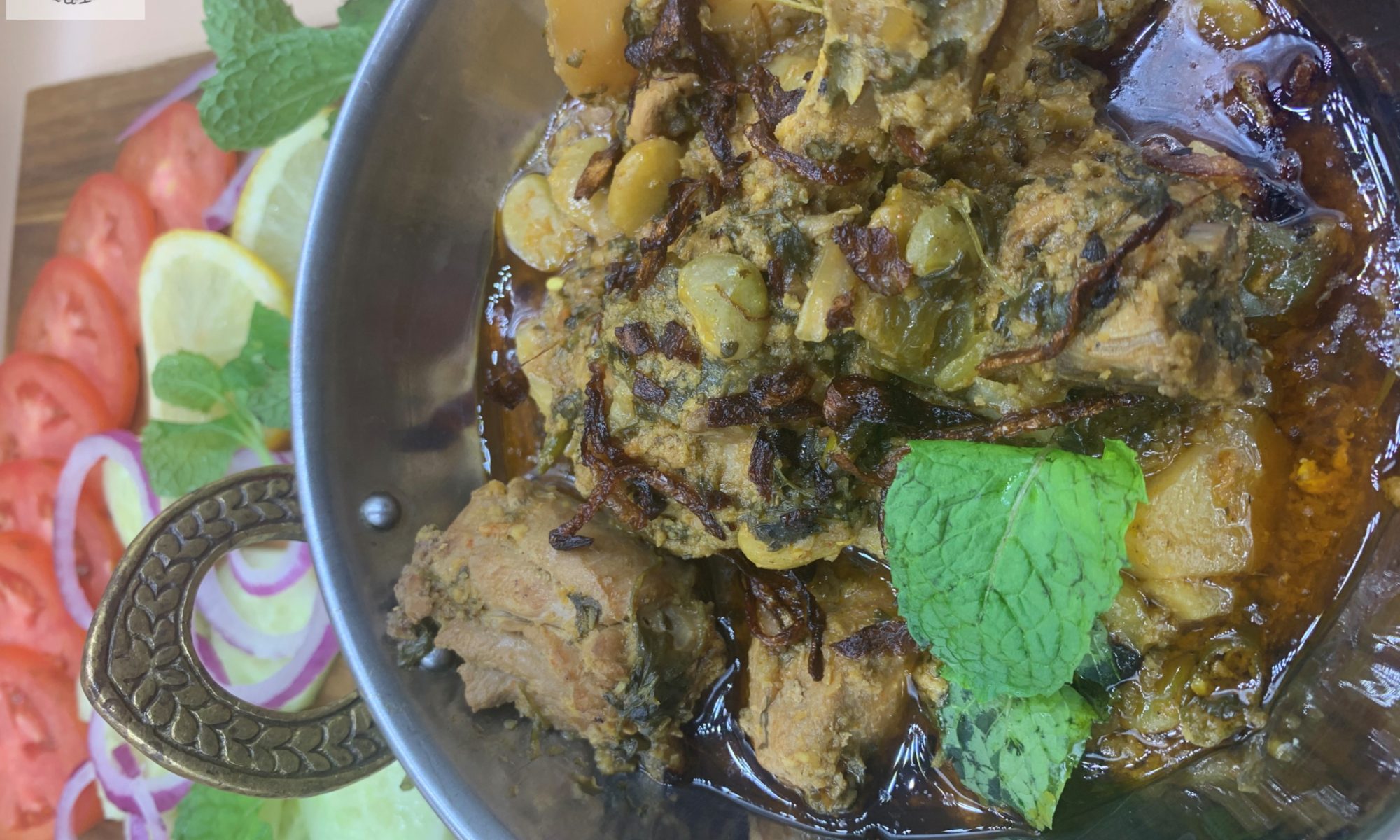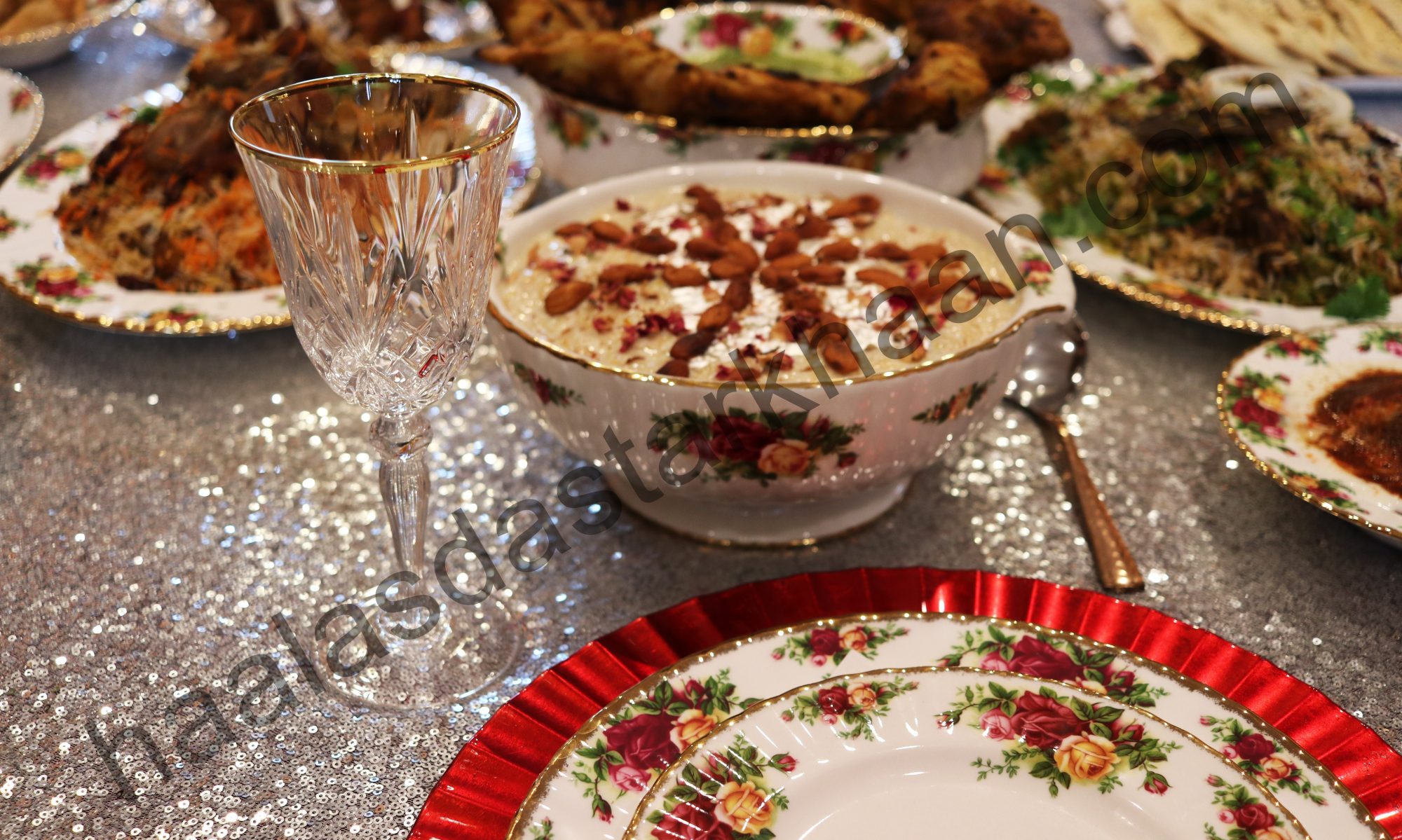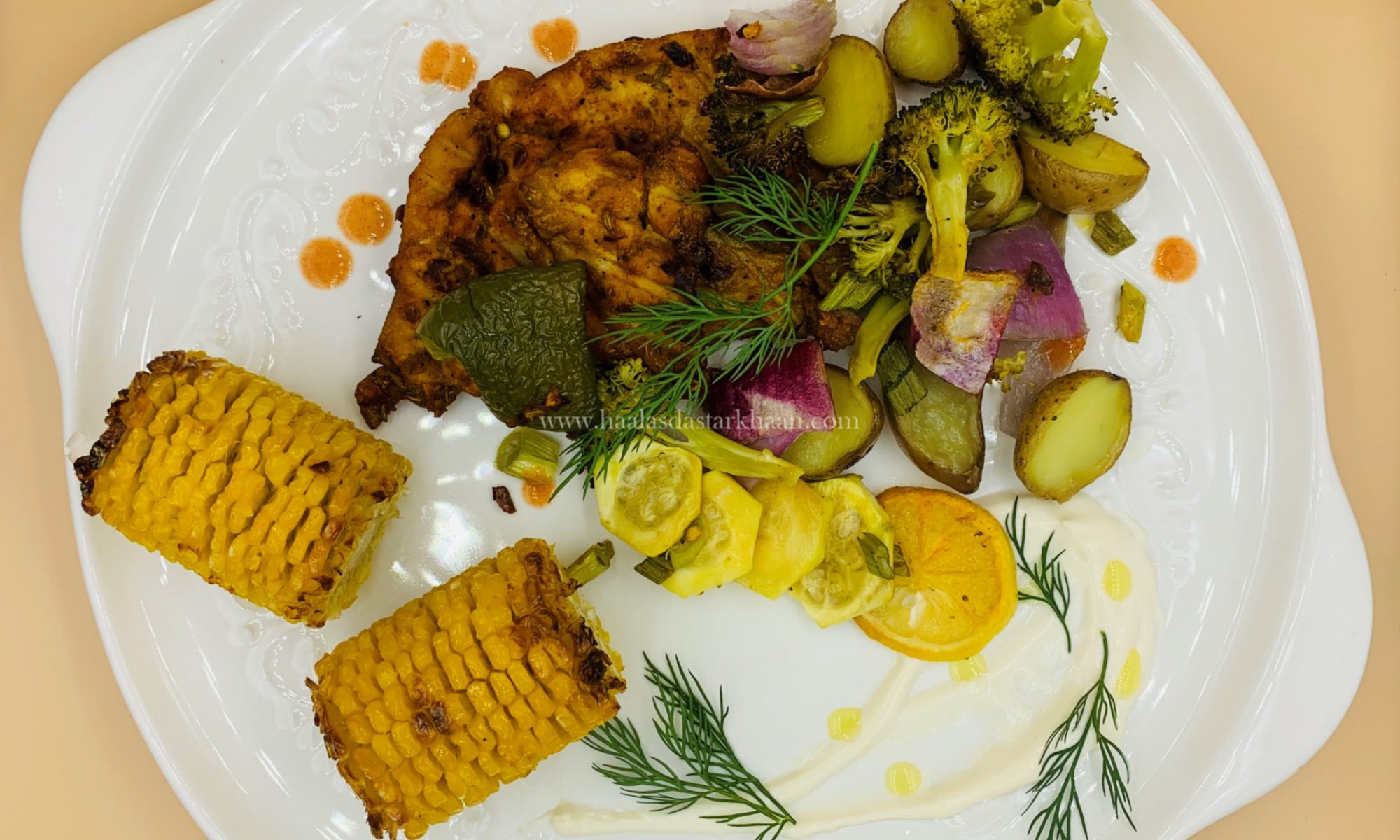With all the different kinds of foods that we consume, at times you just feel that your tummy needs a break. You feel you need more veggies, less oil, fewer carbs, in all just a healthy meal. But, the problem that people like me face is that we also need something that tastes scrumptious and good along with all the health benefits.
Specially, if you have children as demanding as mine, you basically fight a battle. When the demand is to make veggies look more appealing and to make their protein go leaner without them noticing. That’s when dishes like this are invented.
This Chicken is marinated with spices making it flavorful. The spices can always be switched or played around with. I added Tandoori powder and Red chili powder to make the flavors a little more spicy, but you can always reduce the quantity or omit the spices altogether. I find this a great recipe for easy lunch and dinner.

Kheema curry can be made in so many different styles. Growing up in Rajasthan, I had either tried the Kheema made at home by my Mom, which was a must for picnics and Road trips. My mom would made Kheema with Aaloo and Kheema with matar. There were never Kheema made with multiple vegetables together. I heard my mother also mention that my grandmother enjoyed adding cauliflower to Kheema, which I don’t remember trying it and honestly could’t get myself to making it since Mr. Parveez isn’t a cauliflower fan.
And then came Kheema curry that we would eat in Puraani Dilli, Jama Masjid area for breakfast when we went to Delhi and one of my other favorite was Mumbai Kheema Paav. I will be posting that recipe soon along with the recipe of the Paav. Both of those were my absolute favorite and I would look forward to them. Hot Tandoori Roti in Delhi as an early morning breakfast with Kheema, Nahari or Paaye makes anyoone’s morning special. Mumbai Kheema Paav on the other hand has Tomato base and mostly made of Chicken.
But this recipe is completely different from all of them. This recipe comes from Mr. Parveez’s family and its a recipe that most Bangalore Muslims make for Kheema. The recipe comes from Mr. Parveez’s Mom to us and we proudly call it “Ammi wala Kheema”. So, basically its chopped onions cooked with some whole spices in oil/ghee, with Ginger garlic paste, Goat Kheema, spices and tomato. Along with all these, there are a ton of veggies that make their way to this Kheema, potatoes, Beans, Fenugreek leaves and Dill leaves. This Kheema recipe is great for Breakfast, but tastes great even for Lunch and Dinner.

Chicken as a curry is made in so many varieties that sometimes it amazes me how people from different regions in just one state make so many different dishes, with every dish varying in flavor from the other. The basis of making these curries are basically the availability of ingredients in that region.
I am from the northern west part of India, Rajasthan. Its a desert part so every time we make a Chicken curry, its mostly Yogurt based, which I think is because back in the days there weren’t many ways of getting any fresh vegetables, like Tomatoes and since water was always scarce, growing your own was difficult as well. Since there weren’t any fresh veggies, we barely have any Chicken dishes that are cooked with vegetables.
On the other hand, Mr. Parveez is from the southern part of India and there is loads of greenery and fresh vegetables are always available, so most of the dishes are tomato based and also use a lot of other green vegetables and thus we get loads of chicken curry which aren’t just protein rich but also have loads of fiber. Honestly, I feel my in laws eat very healthy. There is always a green veggie curry for morning breakfast and the lunch and dinner also comprises of green leafy vegetables cooked as a curry or mixed in with other veggies or Daal or cooked with Chicken or Meat.
This Chhilli Daal happens to be one such curry. These green beans are also known as Surti Papdi Lilva or Valor Lilva. We get the frozen pack here and they aren’t much big in size either. Addition to that, I also have to clean and peel it when I bring them home which is a tedious job. I guess I feel it more because in India, they are bigger in size, more flavorful and on top of everything they are peeled by the vegetable vendors which makes it so convenient.
This Chicken curry is just so delicious and nutritious, one of my Mother in law’s favorite as well and honestly, mine too. This is my mother in law’s recipe, only that I made some changes to it which she loves as well, I just made it more greener and nutritious. The curry has Fried onions that are further cooked with Ginger garlic paste and spices. Once the Chicken is added, wait till its half cooked, add in the daal/beans and further add the Tomato-coconut puree and cook further for a few minutes. Usually at this point the original recipe for this curry is concluded. But the changes I made to the recipe are that I added methi leaves/ fenugreek leaves and Dill leaves. With Methi, I add fresh if I have it and if not then I use Kasoori Methi. In both cases, the flavor of the dish is not compromised. Serve it with Plain boiled Rice or Roti or Parantha. We love it all ways and I am sure you will too. This is something different and completely worth trying. Enjoy!!!

This Chicken curry recipe is from Mr. Parveez’s family. I was given the recipe by my Mother in law. The dish uses a variety of veggies, which honestly at times makes it difficult to make because if you miss out on one, it changes the whole taste. From the stories I hear of Mr. Parveez’s childhood, this dish was cooked almost every Friday and he would always look forward to his mom making it. I believe even today when he eats this Korma, it makes his mind go down the memory lane and remember the awesome dishes his mom made.
Now Bangalore is the garden city of India. The city with loads of greenery and always has an availability of fresh flowers and vegetables, therefore most dishes that you look at comprises of fresh vegetables and other ingredients. those dishes necessarily do not have to be under the category of “vegetarian food”, even the non vegetarian dishes, cooked in most almost all Muslim families use a lot of vegetables with their meat/chicken as well. Initially I wasn’t too big of a fan to be very honest. Coming from Rajasthan, I wasn’t used to mixing up vegetables and meat. We, in Rajasthan prefer keeping them separate, but with time I started enjoying the flavors of the veggies more and understood that this is one of the best ways to incorporate more vegetables in your diet as well.
I got the recipe of this dish from my Sister in law after I became the member of the new family. In fact most of the recipes that I learnt from Mr. Parveez’s family were given to me by my third sister in law. This dish can be made with meat or chicken so feel free to switch the chicken with Lamb/Goat meat. You will have to cook longer though and also make sure that you add the vegetables only after the meat is properly cooked. Chicken takes less time, so adding the veggies quickly is fine.
The chicken is cooked with Potatoes, Bell Peppers, Fenugreek/ Methi leaves, Lima beans and dill leaves. You can always substitute Lima beans with peas if you want. While coming across Turkish, mainly Middle Eastern Cuisine I did learn that most meat/ chicken curries are cooked with a variety of vegetables. That makes me think that this dish is also influenced from the Mughal Era, not something they learnt from the Indian soil, but something that they taught Indian cuisine. Because, coming to think of it, if you analyze most Non vegetarian Indian/ Pakistani dishes, you will know that they exclude vegetables. I would love to cook this Korma in one of the Turkish Earthen pots some day.
Usually this Korma is served alongside Rice dish called Khushka, which is Rice cooked with Mint leaves. You can also serve this Korma with Parantha, Naan or Sheermal.

Goat Kheema is a popular dish in Muslim families, often served for breakfast. When talking of Kheema, did you know that Kheema is not only made differently in India from Pakistan or Bangladesh but its made differently in different regions of India.
The north part of India makes Kheema with Cauliflower and serve it with Naan, East side makes theirs with Potato and serves them with Parantha, Delhi loves making it plain and also serves it with Tandoori Roti, West loves it Peas, Mumbai has it completely distinct and serves it with paav and down south they add methi [fenugreek leaves] and dill leaves to Kheema and serve it with Kerala Parantha. All the varieties are different and awesomely delicious and its hard to pick one over another.
The word ‘Kheema’ is inspired from the Persian language, in which minced meat is referred as, “Kiyma”. Kheema was a popular breakfast staple in the Mughal cuisine and the history says that it was introduced in the Indian cuisine by Mughal Emperor Akbar, who was so fond of new recipes and would love the merge of Persian and Indian recipes. It was an age when the royal families took their culinary affairs almost as seriously as their administration.
Being from the Rajasthan, I have always loved the Kheema curry in Mumbai and Delhi. Nahari and Kheema in Delhi used to be my favorite breakfast. My mom always made Goat Kheema with peas, and it used be one of the dishes that she would always make for picnics or day trips and the best part was that we enjoyed and relished them with Bread as well. My Mother in law also adds Lima Beans to Kheema and I loved that addition to kheema.
Then one day on my visit to our local Indian store I found fresh Green chana. They looked so fresh and I bought them thinking I would like to make something out of it. I asked Mr. Parveez and he then asked me to try adding them to Kheema and I did and the result was fabulous. I like making my Kheema with Boneless meat, but you can always get the minced meat from a meat store. Similarly, if you can’t find Fresh Hare Chane, you can always use frozen ones. Kheema curry in any which way, made with this recipe will always come out delicious.
The recipe is great and you can serve it with Naan, Parantha and even buns.





